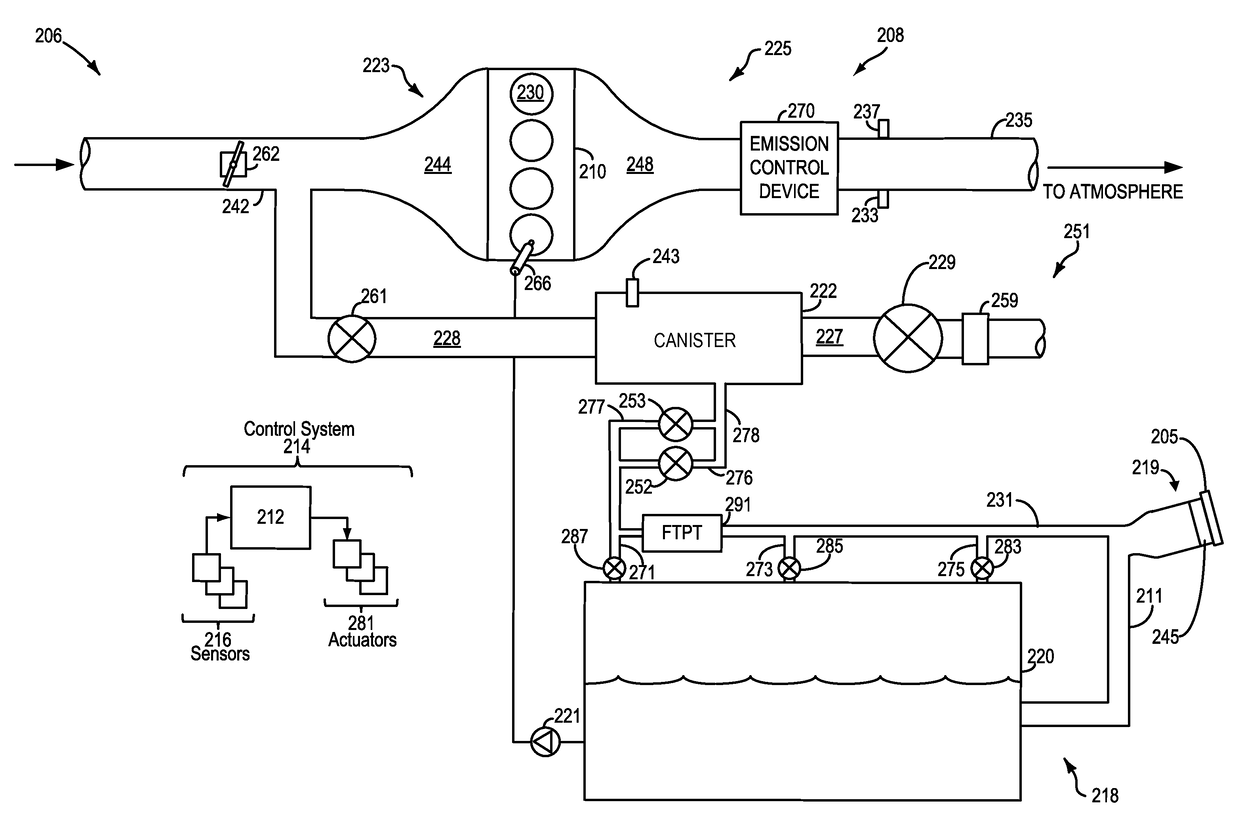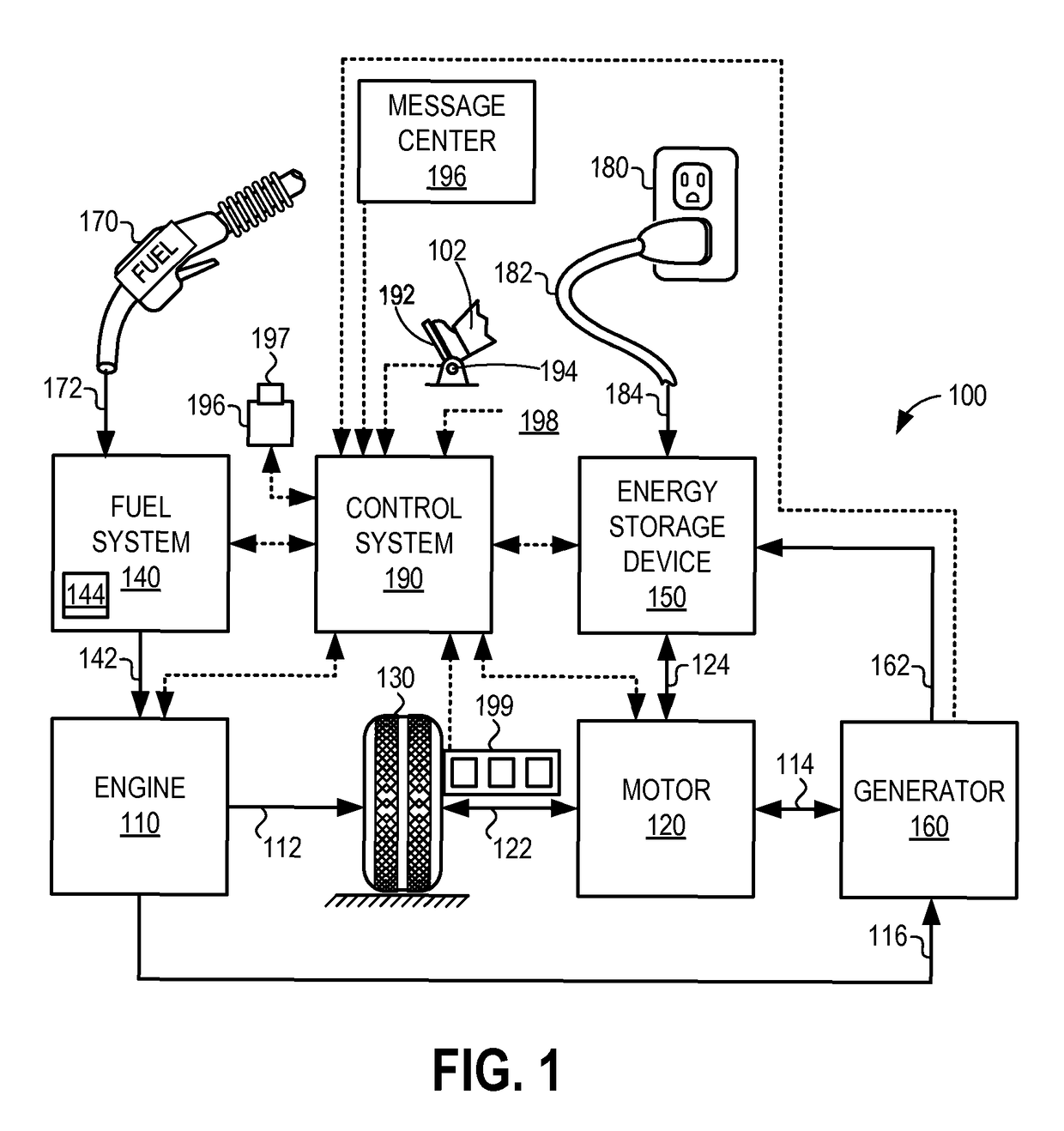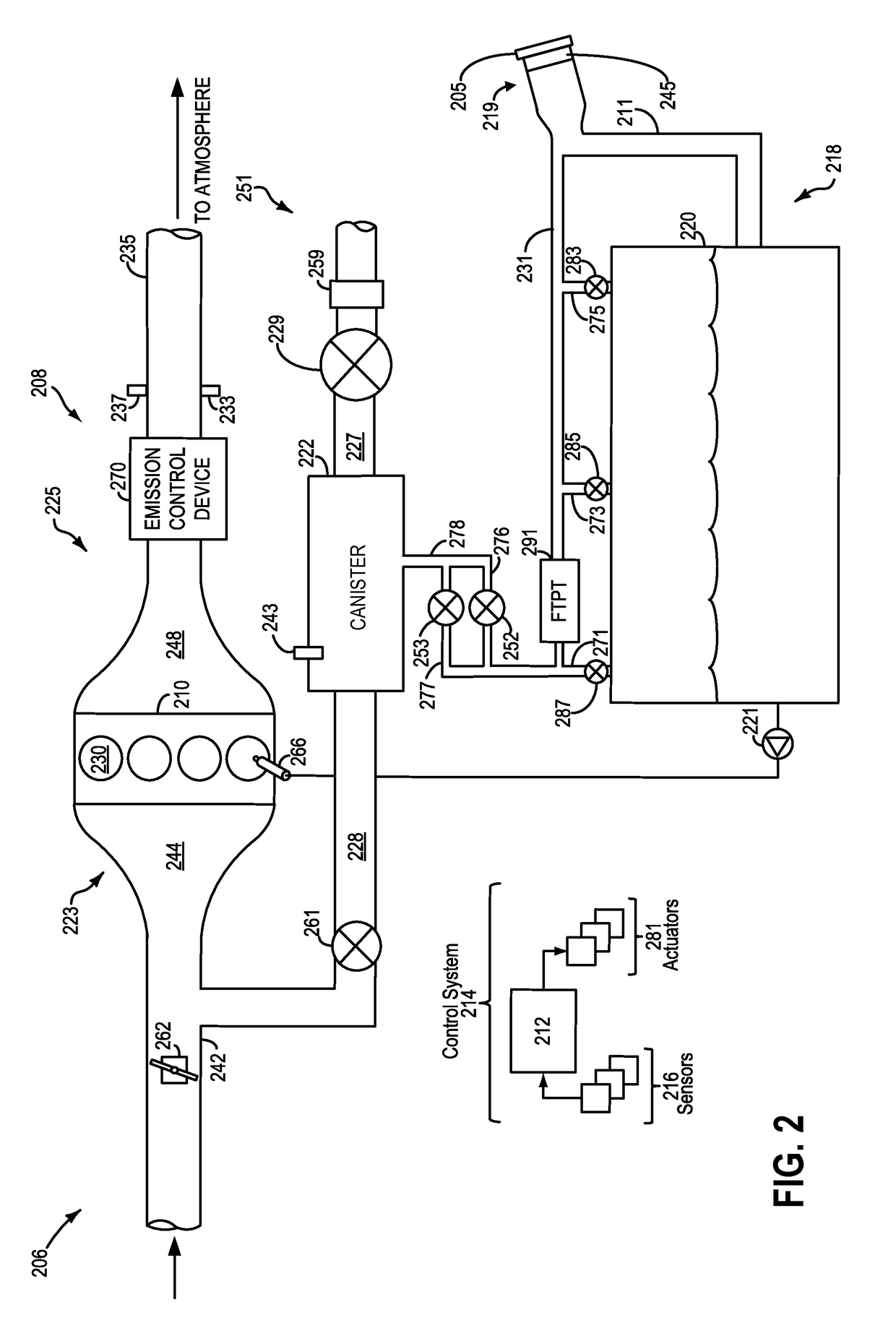Systems and methods for depressurizing a fuel tank
a technology of fuel tank and depressurization method, which is applied in the direction of valve operating means/release devices, machines/engines, vehicle sub-unit features, etc., can solve the problems of increasing power consumption, increasing maintenance costs, and vapors from running loss and diurnal temperature cycles not being transferred into the fuel vapor canister, so as to reduce the release of fuel vapors
- Summary
- Abstract
- Description
- Claims
- Application Information
AI Technical Summary
Benefits of technology
Problems solved by technology
Method used
Image
Examples
Embodiment Construction
[0019]The following description relates to systems and methods for depressurizing a fuel tank via a latchable refueling valve. The fuel tank may be included in a vehicle, such as a hybrid electric vehicle, as shown in FIG. 1. The vehicle may include a fuel system and an evaporative emissions system, as shown in FIG. 2. The fuel system may be coupled to the evaporative emissions system via each of a tank pressure control valve and the latchable refueling valve (FIG. 3). The latchable refueling valve may be adjusted from a latched closed position to a latched open position via a first pulse of voltage (FIG. 4). Further, the latchable refueling valve may be adjusted from the latched open position to the latched closed position by a second pulse of voltage (FIG. 5). Furthermore, the latchable refueling valve may be held at a more open position relative to the latched open position by applying a continuous voltage (FIG. 6). Fuel pressure within the fuel tank may rise substantially due to...
PUM
 Login to View More
Login to View More Abstract
Description
Claims
Application Information
 Login to View More
Login to View More - R&D
- Intellectual Property
- Life Sciences
- Materials
- Tech Scout
- Unparalleled Data Quality
- Higher Quality Content
- 60% Fewer Hallucinations
Browse by: Latest US Patents, China's latest patents, Technical Efficacy Thesaurus, Application Domain, Technology Topic, Popular Technical Reports.
© 2025 PatSnap. All rights reserved.Legal|Privacy policy|Modern Slavery Act Transparency Statement|Sitemap|About US| Contact US: help@patsnap.com



